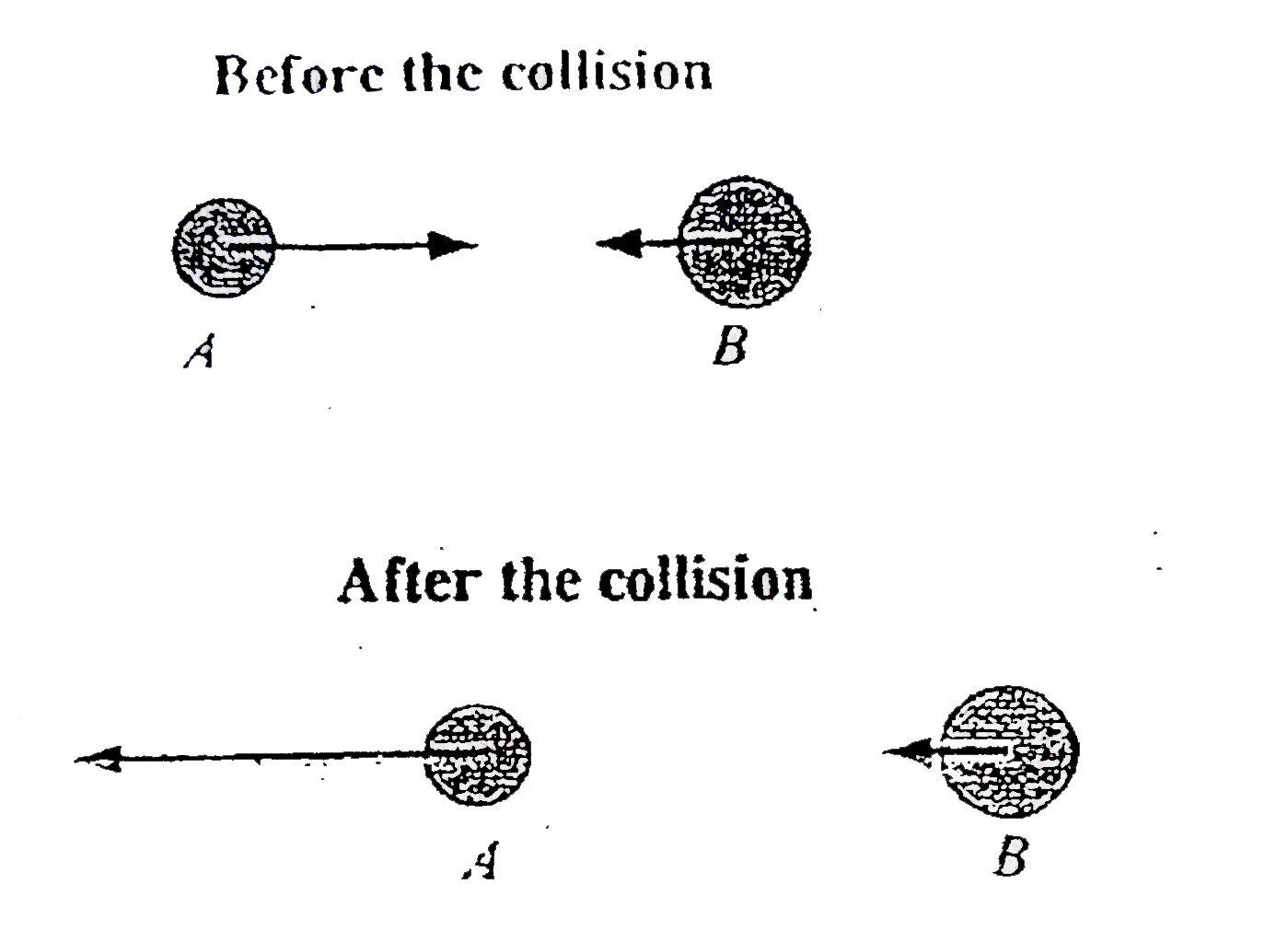Ball A of mass 1kg moving right with speed 2m/s bounces off ball B of mass 1.5kg, and then moves left with speed 4m/s. Calculate magnitude of impulse (SI Units) received by ball B

2
3
6
4
The correct Answer is:C
Ans.(3)
impulse on A=− impulse on B
→P=2ˆi,−→Pf=−4ˆi, Impulse on A=−6ˆi
⇒ Impluse on B=6ˆi Ns
Topper's Solved these Questions
- TEST PAPERBook:ALLENChapter:TEST PAPERExercise:PHYSICS
Explore 4 Videos
- TEST PAPERBook:ALLENChapter:TEST PAPERExercise:PHYSICS
Explore 4 Videos
- SIMPLE HARMONIC MOTIONBook:ALLENChapter:SIMPLE HARMONIC MOTIONExercise:Example
Explore 1 Video
- TEST PAPER 1Book:ALLENChapter:TEST PAPER 1Exercise:PHYSICS
Explore 11 Videos
Similar Questions
A ball of mass 2kg moving with speed 5m/s collides directly with another ball of mass 3kg moving in the same direction with speed 4m/s. The coefficient os restitution is 2/3. Find the velocities of both ball after the collision.
View SolutionA ball of mass 0.1 kg is thrown vertically with a speed of 7 m s−1 . Calculate the kinetic energies after half second .
View Solution
Knowledge Check
Find the kinetic energy of a ball of mass 2kg moving with a speed of 30ms−1
A900WB900PaC900ND900JA ball of mass 0⋅2 kg moving with a speed of 30 m/s strikes a bat returns in opposite direction with speed of 90m/s . Magnitude of change in momentu,m of ball will be
AZeroB6 kg m/sC12 kg m/sD24 kg m/sA ball A of mass 1kg , moving with a speed of 12m/s , collides obliquely and elasticity with another ball B which was initially at rest. Ball A then moves off at the right angle to its initial direction with a speed of 5m/s. The momentum of ball B after the collision is
A5kgm/sB11kgm/sC13kgm/sD17kgm/
A ball of mass 0.2kg strikes an obstacle and moves at 60∘ to its original direction. If its speed also changes from 20m/s to 10m/s, the magnitude of the impulse received by the ball is
View SolutionA ball of mass 0.2kg strikes an obstacle and moves at 60∘ to its original direction If its speed also changes from 20m/s to 10m/s, the magnitude of the impulse received by the ball is .
View SolutionA ball of mass M moving with speed v collides perfectly inelastically with another ball of mass m at rest. The magnitude of impulse imparted to the first ball is
View SolutionA ball of mass 5 kg moving with speed 8 m/s collides head on with another stationary ball of mass 15 kg. If collision is perfecty inelastic, then loss in kinetic energy is
View SolutionA ball of mass 5 kg moving with speed 8 m/s collides head on with another stationary ball of mass 15 kg. If collision is perfectly inelastic, then loss in kinetic energ is
View Solution
